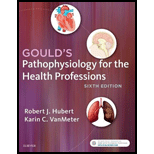
Concept explainers
To differentiate: The types of adverse reactions.
Introduction: Pharmacology is the study of drugs, their actions, dosage, therapeutic uses, and adverse effects. A drug is a substance that alters the biological activity in a person. A drug has more than one effect on the body; some of them are desirable and some are undesirable.
Explanation of Solution
Adverse reactions are side effects that are dangerous and may be life threatening. The types of adverse reactions are as follows:
Hypersensitivity: It is also known as an allergic reaction. The reaction may be mild or can cause anaphylaxis. The patient should avoid structurally similar drugs.
Idiosyncratic: It refers to the unusual behavior of a person due to a drug reaction. It is also called paradoxic. An example would be excessive excitement after taking a sedative. These reactions occur in elderly persons.
Iatrogenic: It refers to the negative effect on the body due to medication error, overdose, or unusual response.
Teratogenic: It refers to the harmful effect of drug on a fetus, which causes developmental defects.
Interactions: It occurs when a drug effect is modified in combination with another drug, food, herbal compound, or other material. This also occurs when a patient takes many drugs in consultation with several physicians.
Want to see more full solutions like this?
Chapter 3 Solutions
Gould's Pathophysiology for the Health Professions, 6e
- true or false dark skinned infants should be screened for vitamin D levelsarrow_forwardtrue or false any practice employee is authorized to and should communicate collection guidelines with practice?arrow_forwardrtrue or false equesting a listing of specific creditreferences during patient intake os an acceptable business practice?arrow_forward
- give an overview on the respiratory assessmentarrow_forwardexplain an abdominal exam?arrow_forwardDiscuss β -Lactam antibiotics under the following subheadings Classifications of penicillins Classification of Cephalosporins General Mechanism of Actions Clinical Indications of penicillins and cephalosporins Adverse effects of β-lactamsarrow_forward
- a. Define neoplasm b. Differentiate between benign and malignant tumours c. Describe the molecular basis of cancerarrow_forwarddifferentiate the extra heart sounds S3,S4, murmurs and gallopsarrow_forward• Define shock and list types of shock • Discuss pathogenesis of septic shock. • Enumerate the stages of shock. • Define oedema and describe the pathophysiologic mechanisms of oedema with examples.arrow_forward
- Discuss Hypertension under the following headings: Definition Diagnosis Non-pharmacological intervention Drugs Classification Management of a Hypertensive emergencyarrow_forwardExplain how the answer could be 2 or 1.8 WITHOUT changing the questionarrow_forwardoverview of the neurological system, cranial nerves and what part of the body it innervatesarrow_forward
 Phlebotomy EssentialsNursingISBN:9781451194524Author:Ruth McCall, Cathee M. Tankersley MT(ASCP)Publisher:JONES+BARTLETT PUBLISHERS, INC.
Phlebotomy EssentialsNursingISBN:9781451194524Author:Ruth McCall, Cathee M. Tankersley MT(ASCP)Publisher:JONES+BARTLETT PUBLISHERS, INC. Gould's Pathophysiology for the Health Profession...NursingISBN:9780323414425Author:Robert J Hubert BSPublisher:Saunders
Gould's Pathophysiology for the Health Profession...NursingISBN:9780323414425Author:Robert J Hubert BSPublisher:Saunders Fundamentals Of NursingNursingISBN:9781496362179Author:Taylor, Carol (carol R.), LYNN, Pamela (pamela Barbara), Bartlett, Jennifer L.Publisher:Wolters Kluwer,
Fundamentals Of NursingNursingISBN:9781496362179Author:Taylor, Carol (carol R.), LYNN, Pamela (pamela Barbara), Bartlett, Jennifer L.Publisher:Wolters Kluwer, Fundamentals of Nursing, 9eNursingISBN:9780323327404Author:Patricia A. Potter RN MSN PhD FAAN, Anne Griffin Perry RN EdD FAAN, Patricia Stockert RN BSN MS PhD, Amy Hall RN BSN MS PhD CNEPublisher:Elsevier Science
Fundamentals of Nursing, 9eNursingISBN:9780323327404Author:Patricia A. Potter RN MSN PhD FAAN, Anne Griffin Perry RN EdD FAAN, Patricia Stockert RN BSN MS PhD, Amy Hall RN BSN MS PhD CNEPublisher:Elsevier Science Study Guide for Gould's Pathophysiology for the H...NursingISBN:9780323414142Author:Hubert BS, Robert J; VanMeter PhD, Karin C.Publisher:Saunders
Study Guide for Gould's Pathophysiology for the H...NursingISBN:9780323414142Author:Hubert BS, Robert J; VanMeter PhD, Karin C.Publisher:Saunders Issues and Ethics in the Helping Professions (Min...NursingISBN:9781337406291Author:Gerald Corey, Marianne Schneider Corey, Cindy CoreyPublisher:Cengage Learning
Issues and Ethics in the Helping Professions (Min...NursingISBN:9781337406291Author:Gerald Corey, Marianne Schneider Corey, Cindy CoreyPublisher:Cengage Learning





